- Tel: +86 813 2105845
- Fax: +86 813 2105845
- Mob: +86 13778532392
- Contact: Mr. Jacky
 info@dinosaurs-world.com
info@dinosaurs-world.com Jackydinosworld@gmail.com
Jackydinosworld@gmail.com Jackyyiming@gmail.com
Jackyyiming@gmail.com Jackyzengdinosaursworld
Jackyzengdinosaursworld
- This adorable dinosaur is worth some Jurassic hugs
For a dinosaur, celebrity status is usually achieved by being big, belligerent or both. The big headliners of 2014 were a dinosaur as massive as a 747 and a sharp-toothed predator that outweighed T. rex.
The new species called Aquilops is not that kind of dinosaur.
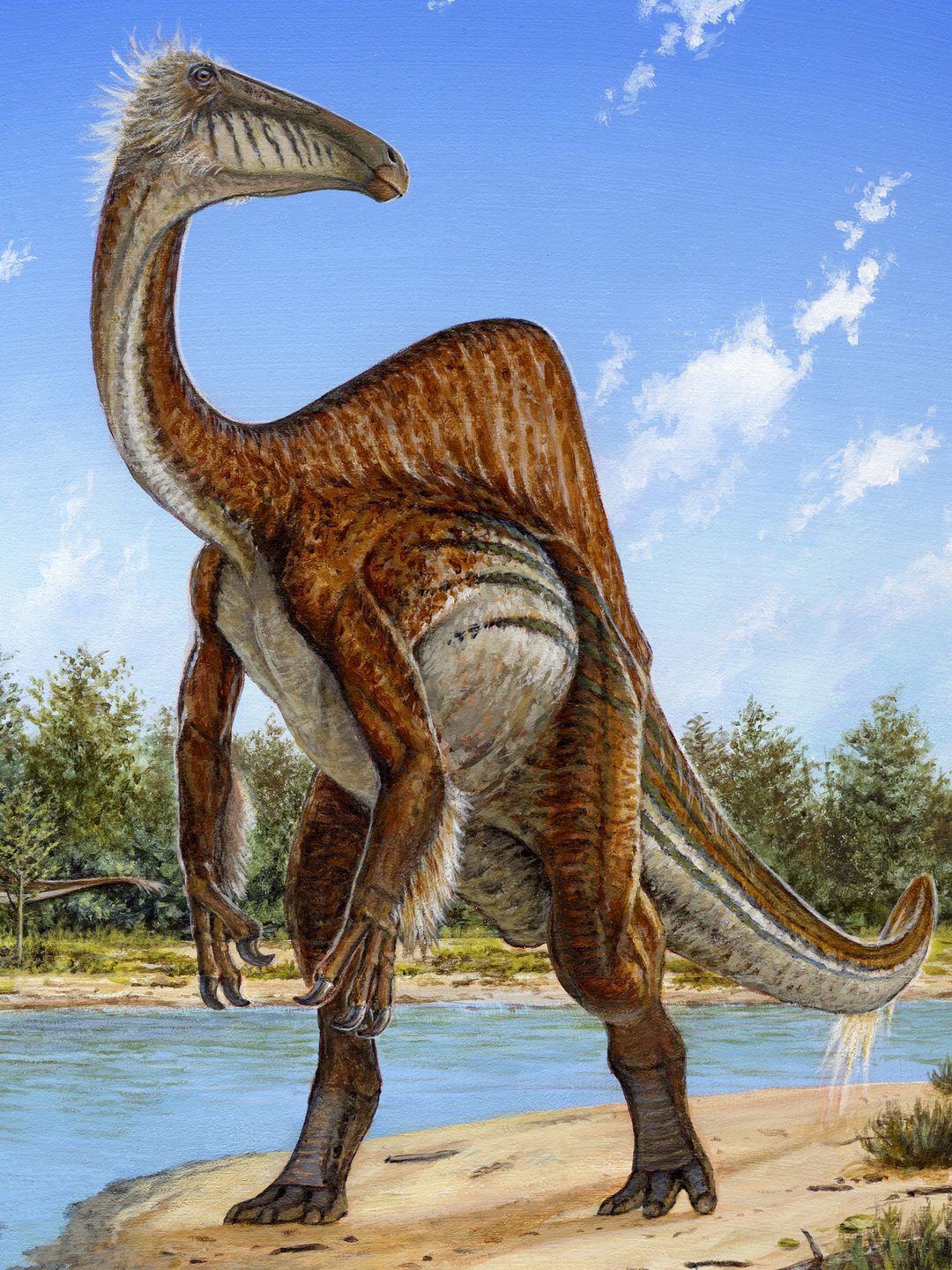
Aquilops does not inspire awe. Instead it makes people go "Awww!" It weighed as much as a bunny rabbit and had a funny-looking beak like a parrot's. Small enough to fit in a person's arms, itty-bitty Aquilops may well be North America's most adorable new dinosaur.
But it also has some serious natural-history chops. At roughly 105 million years old, Aquilops is the continent's oldest definitive member of the group known as horned dinosaurs. Scientists think that either Aquilops or one of its close ancestors migrated from Asia to the New World, wandering North America eons before iconic horned dinosaurs such as Triceratops arrived on the scene.
"This thing is cute," says Andrew Farke, whose team recently reported the new species in the journal PLOS ONE and who works at the Raymond M. Alf Museum of Paleontology in California. "And it made its way from Asia into North America. It's a cool success story." Hence Farke's nickname for the new species: "the little dinosaur that could."
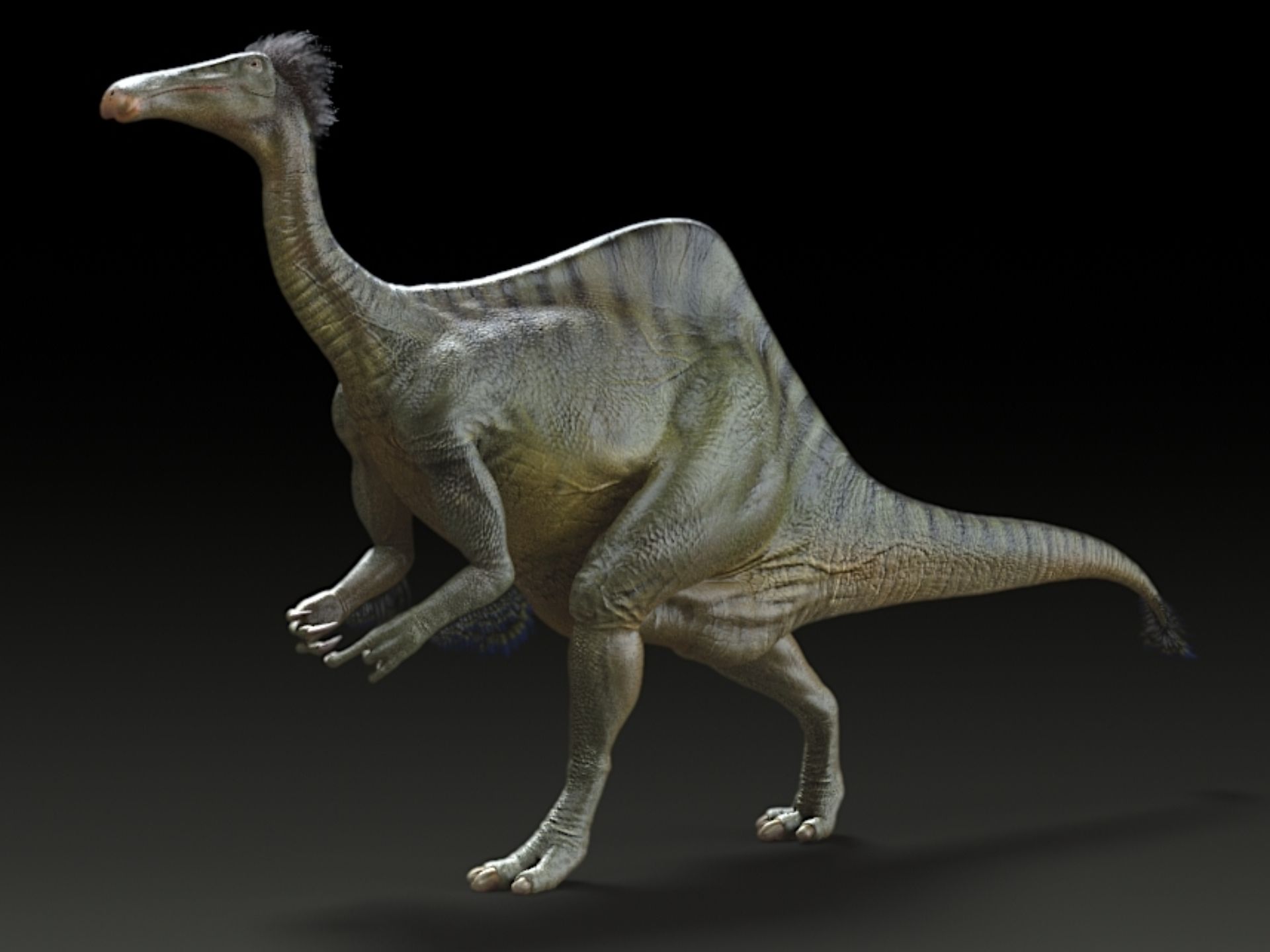
It was almost the little dinosaur that wasn't. Small animals leave a small imprint in the fossil record, and paleontologist Scott Madsen found Aquilops in southern Montana in 1997 only because a flash of white caught his eye. It turned out to be tiny teeth embedded in a softball-sized rock.
Many hours of painstaking excavation later, Madsen, of the Utah Geological Survey, realized he had uncovered something out of the ordinary. "I said, holy cow, that's a beak!"
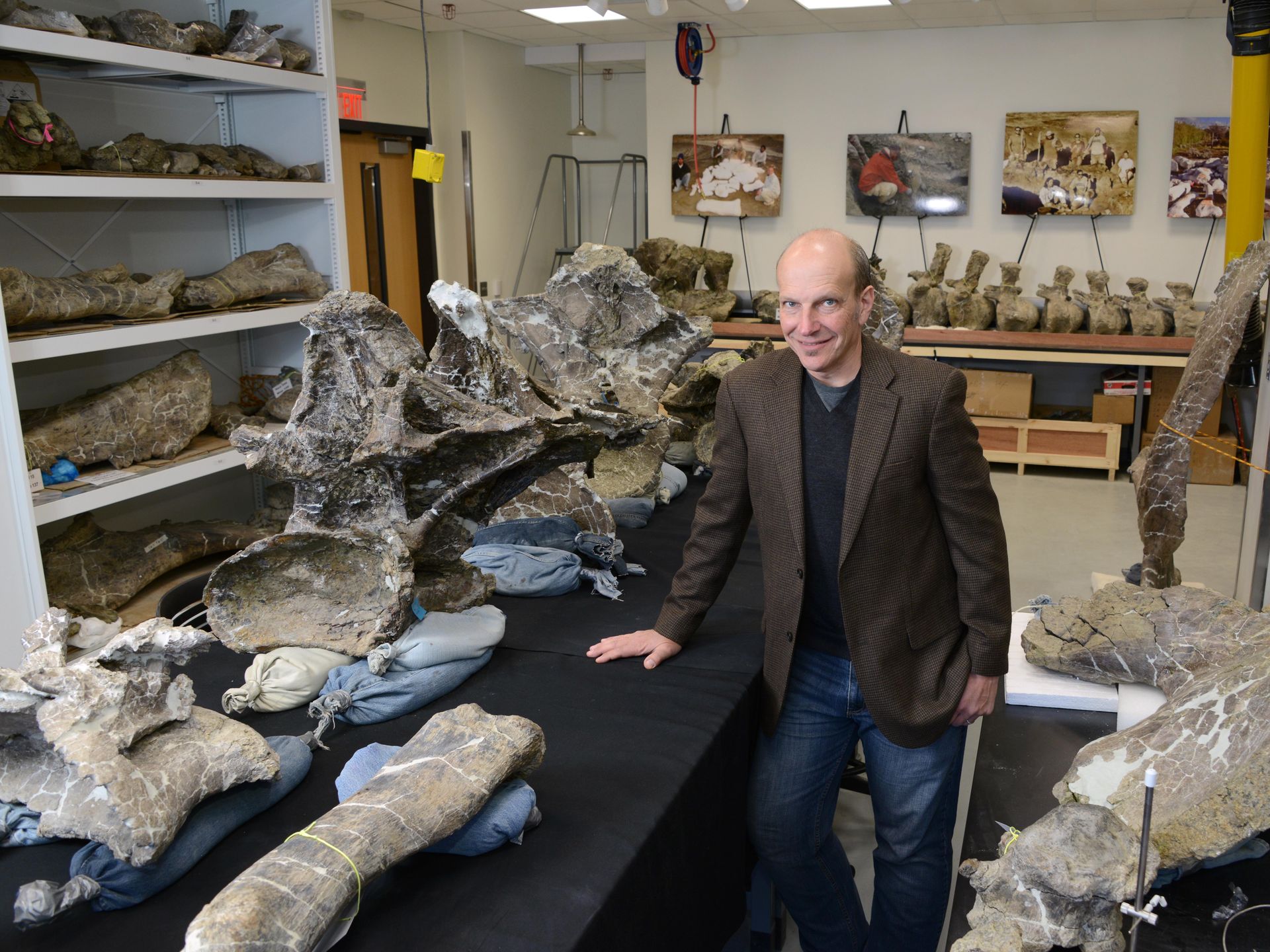
The small dinosaur's hooked beak is unlike that of any other horned dinosaur, as is the beak's prow-like protuberance. The animal's strange profile inspired its scientific name, Aquilops americanus, or "American eagle face," and many questions. Was the beak for fighting? Breaking open cones or seeds? Decoration?
"We see other beaks, but we don't see anything with this little prong on the front," says James Kirkland, Utah's state paleontologist, who was not associated with the new find. "This thing might have been doing something that no one else did."
Aquilops was a vegetarian that most likely snipped off bits of ferns, saplings and other plants with that sharp beak, Farke says. It probably walked on two legs and had a long tail. Aside from its beak, Aquilops was essentially a plain-vanilla dinosaur, lacking the fancy horns, spikes and frills common to many other horned dinosaurs.
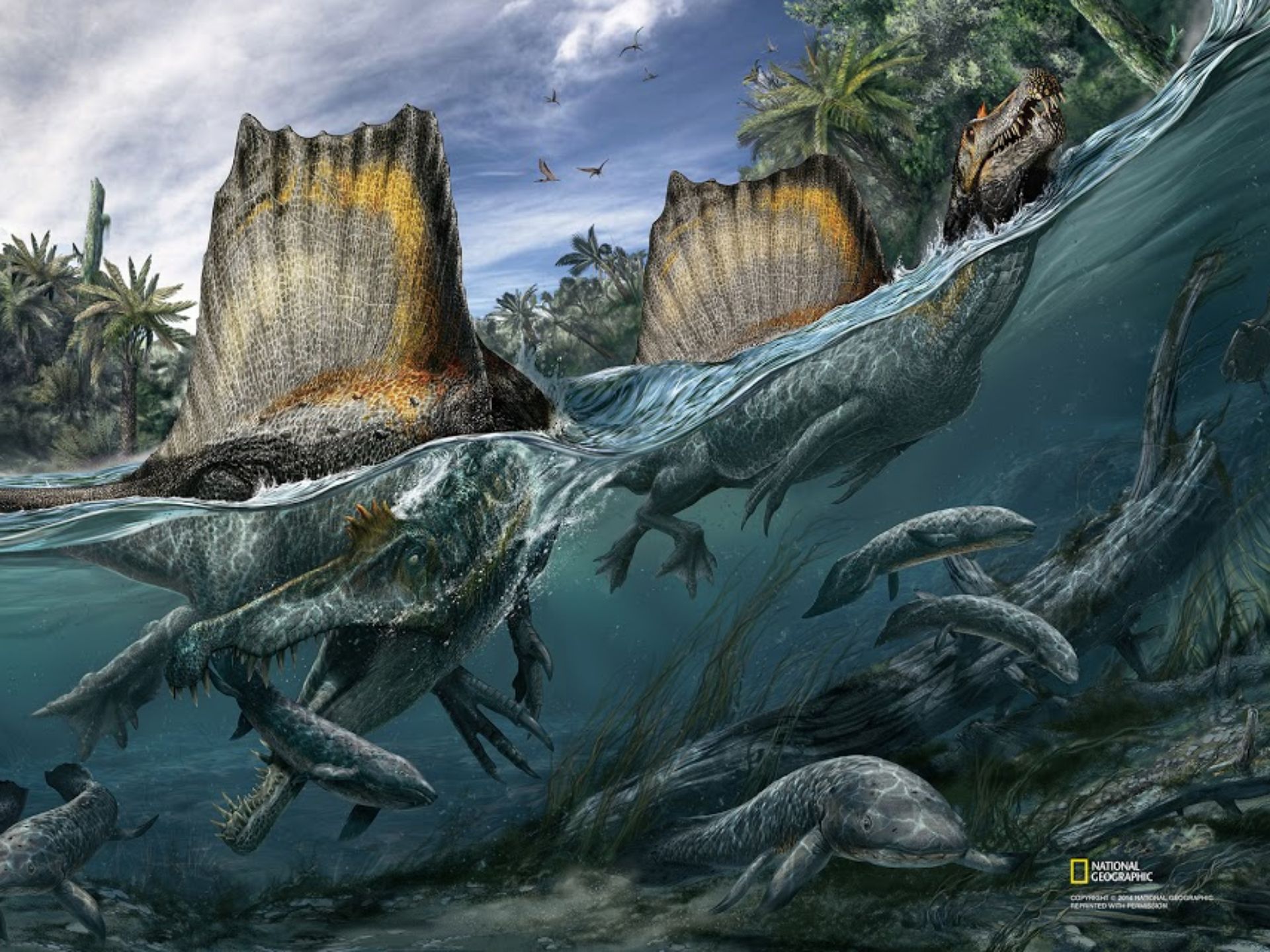
But it's also older by almost 20 million years than the next-oldest known species of horned dinosaur in North America. A family tree constructed by Farke and his colleagues shows that Aquilops or a very Aquilops-like relative made its way to the Americas from Asia at least 105 million years ago before dying out. Other Asian horned dinosaurs made the same trek, only later.
"What this animal shows is the early history of the group of horned dinosaurs … in North America," Farke says. "Up to this point, we really didn't know anything about what they were like, say, 40 million years before Triceratops."
What this animal also shows is that a dinosaur doesn't have to be hulking and surly to win a fan base.
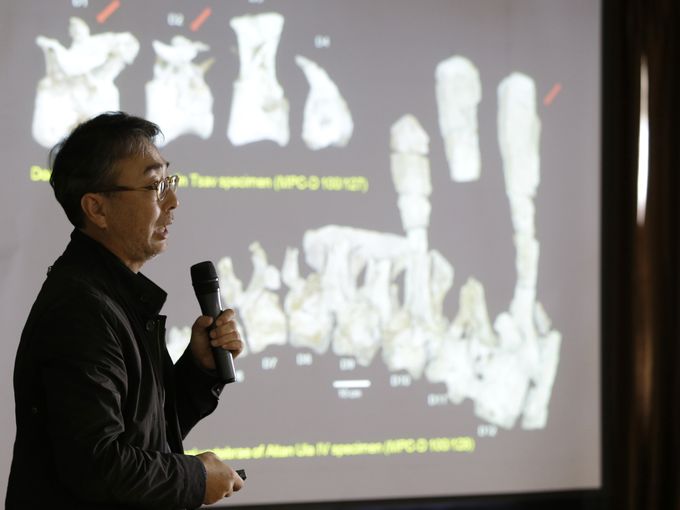
"Somebody's just gotta make a little plush Aquilops, right?" Farke's co-author Mathew Wedel of the Sam Noble Oklahoma Museum of Natural History wrote in a recent blog post. "When and if that happens, you know where to find me."


 2015-01-05
2015-01-05
 New dinosaur species help scientists fill in evolutionary gaps
New dinosaur species help scientists fill in evolutionary gaps Feathered everything: just how many dinosaurs had feathers?
Feathered everything: just how many dinosaurs had feathers? Dinosaur Fossil With Fleshy Rooster's Comb Is First of Its Kind
Dinosaur Fossil With Fleshy Rooster's Comb Is First of Its Kind Scientists finally decode how dinosaurs turned into birds and learned how to fly
Scientists finally decode how dinosaurs turned into birds and learned how to fly Dark matter may have killed the dinosaurs, claims scientist
Dark matter may have killed the dinosaurs, claims scientist New duck-billed dinosaur uncovered in Alaska, researchers say
New duck-billed dinosaur uncovered in Alaska, researchers say
- Contact Us
- Tel: +86 813 2105845
- Fax: +86 813 2105845
- Contact: Mr. Jacky
 info@dinosaurs-world.com
info@dinosaurs-world.com Jackydinosworld@gmail.com
Jackydinosworld@gmail.com Jackyyiming@gmail.com
Jackyyiming@gmail.com Jackyzengdinosaursworld
Jackyzengdinosaursworld
- Copyright @ 2009 - 2020 Zigong Dinosaurs World Science & Technology Co.,Ltd.

